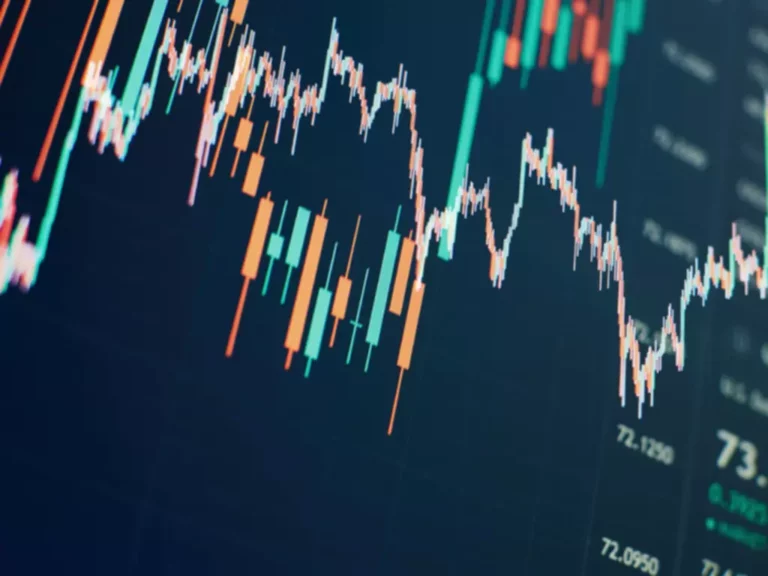If your top priority as an investor is to scale back your charges and trading prices, interval, an all-passive portfolio would possibly make sense for you. In our experience, investors tend to care extra about factors like danger, return and liquidity than they do charges, so we imagine that a mixed method could additionally be beneficial for all investors—conservative and aggressive alike. Active investments are funds run by funding managers who attempt to outperform an index over time, such as the S&P 500 or the Russell 2000. Passive investments are funds supposed to match, not beat, the efficiency of an index. Despite the reality that they put plenty of effort into it, the vast majority of of active fund managers underperform the market benchmark they’re trying to beat. The investing data provided on this page is for academic purposes only.

For most individuals, there’s a time and a spot for energetic and passive investing over a lifetime of saving for major milestones like retirement. More advisors wind up combining the 2 strategies—despite the grief each side offers the opposite over their technique. Active mutual fund managers, both in the United States and abroad, constantly underperform their benchmark index. For occasion, sesearch from S&P Global found that over the 20-year interval ended 2022, solely about four.1% of professionally managed portfolios in the U.S. consistently outperformed their benchmarks.
Lively Vs Passive Investing: Differences Defined
Fees for each active and passive funds have fallen over time, but energetic funds nonetheless price more. In 2018, the common expense ratio of actively managed equity mutual funds was zero.76%, down from 1.04% in 1997, according to the Investment Company Institute. Contrast that with expense ratios for passive index fairness funds, which averaged just zero.08% in 2018, down from 0.27% in 1997. The selection between energetic and passive investing depends on individual preferences and goals. Active investing includes actively managing and choosing investments in an attempt to outperform the market, while passive investing includes investing in a broad market index and holding it for the lengthy run.
This materials shouldn’t be viewed as recommendation or suggestions with respect to asset allocation or any specific investment. This data just isn’t supposed to, and shouldn’t, kind a major basis for any funding choices that you would be make. The indices chosen by Morgan Stanley Wealth Management to measure performance are consultant of broad asset courses. Morgan Stanley Wealth Management retains the best to vary consultant indices at any time.
Passive Vs Lively Investing: Which Is Best For You?
If both returned 5% annually for 10 years, that lower-cost zero.08% fund can be value about $16,a hundred sixty five, whereas the 0.76% fund could be value about $15,a hundred and fifty, or about $1,015 less. And the difference would only compound over time, with the lower-cost fund value about $3,187 more after 20 years. Almost 81% of large-cap, energetic U.S. equity funds underperformed their benchmarks. Despite being more technical and requiring more experience, energetic investing usually gets it mistaken even with the most in-depth fundamental analysis to back up a given investment thesis.
Successful passive investors keep their eye on the prize and ignore short-term setbacks—even sharp downturns. Professional mutual fund managers charge an annual fee, use the cash to do research and choose a basket of stocks to attempt to beat the market. • The majority of energetic strategies don’t generate larger returns over the lengthy haul.

These managers often continue to outperform all through their careers. Some focus on choosing individual shares they think will outperform the market. Others give attention to investing in sectors or industries they assume will do well. (Many managers do both.) Most active-fund portfolio managers are supported by teams of human analysts who conduct in depth research to help establish promising investment opportunities.
Lively Investing Professionals And Cons
The UK has been a happier looking ground for active fund managers, with 85% of lively funds outperforming. Many of those funds invest in small and mid-cap firms, where there’s more opportunity for stock-picking and the potential for higher returns. Passive investing strategies what are the pros and cons of active investing often perform better than active strategies and value much less. You’ll mainly be tied right down to index funds, which are comprised of predetermined funding options.
But if your index follows a general upward trend over the long haul, your share’s ending worth may be fairly excessive. If you’re a passive investor, you’ll probably have a number of more numerous options open to you, together with peer-to-peer lending, real estate, index funds or dividend shares. Chances are, if you https://www.xcritical.com/ put a group of Bogleheads in a room with a bunch of fund managers, it’s probably nobody will utterly agree on the most effective investing strategy. As an investor, a passive or active fashion may be finest suited to your needs. Importantly, neither kind of investing is outright better than the opposite.

Almost all you need to do is open an account and seed it with money. Many or the entire products featured listed under are from our companions who compensate us. This influences which products we write about and where and the way the product seems on a page. The first passive index fund was Vanguard’s 500 Index Fund, launched by index fund pioneer John Bogle in 1976.
That means they get all the upside when a particular index is rising. But — take note — it also means they get all of the draw back when that index falls. An index fund provides simplicity as a simple method to invest in a chosen market as a result of it seeks to trace an index. There isn’t any want to pick and monitor individual managers, or selected among investment themes. This is why lively investing isn’t recommended to most investors, notably in relation to their long-term retirement financial savings.
While some passive investors like to choose funds themselves, many select automated robo-advisors to construct and handle their portfolios. These online advisors typically use low-cost ETFs to keep expenses down, and they make investing as easy as transferring cash to your robo-advisor account. You can purchase shares of those funds in any brokerage account, or you can have a robo-advisor do it for you. Active fund managers are inclined to cost greater charges since this technique requires a better frequency of trading and extra specialized expertise. Actively managed funds even have larger expense ratio fees (from 0.5% to 1.00%) in comparison with passively managed expense ratio charges (from 0% to zero.5%).
While ETFs have staked out an area for being low-cost index trackers, many ETFs are actively managed and follow various methods. Moreover, it isn’t simply the returns that matter, but risk-adjusted returns. A risk-adjusted return represents the revenue from an funding while contemplating the chance stage taken to realize that return. Controlling the sum of money that goes into certain sectors and even particular firms when situations are altering quickly can actually defend the shopper. This article contains basic instructional content material only and does not bear in mind your personal financial state of affairs. Before investing, your individual circumstances should be thought of, and you may want to hunt unbiased monetary recommendation.
Energetic Investments
You can even put cash into actively traded mutual funds and ETFs, that are pre-established funding portfolios primarily based on market data and economic trends. But unlike passively managed funds, energetic funds are extra volatile to the ups and downs of the market. For that reason, energetic investing just isn’t the beneficial technique for long-term investing targets. John Bogle, founding father of Vanguard, seen that energetic mutual funds charge higher fees and perform worse than the index.
- John Bogle, founding father of Vanguard, noticed that lively mutual funds cost greater charges and carry out worse than the index.
- Many advisors hold your investments balanced and minimize taxable positive aspects in varied ways.
- Active investing puts more capital in the direction of certain particular person shares and industries, whereas index investing makes an attempt to match the efficiency of an underlying benchmark.
- The investing data supplied on this page is for educational functions solely.
- But even commonplace actively managed funds, which may charge 1% or 1.5% or even 2% yearly, are far greater than the investment fees of most passive funds, where the annual expense ratio may be just a few foundation points.
- Before you resolve which one is greatest for you, take a while to think about your funding targets.
For lively funds, the typical MER jumps as a lot as 1.59%, leading to a 1.31% distinction. It’s straightforward to get began when you open an investment account with SoFi Invest. You can invest in stocks, exchange-traded funds (ETFs), mutual funds, various funds, and more.

However, every technique will serve the wants of a particular type of investor better. Before you decide which one is best for you, take a while to contemplate your investment goals. Need some help deciding which investment technique is true for you? Before you dive into an active strategy to investing, take some time to study the fundamentals. Without a fundamental understanding of the stock market, it’s higher to stay to a passive approach till you’ve sufficient time to decide to studying this ability. The term “passive investing” may not have a robust constructive connotation, but the funds that comply with an indexing strategy typically do properly vs. their energetic counterparts.
Because index funds merely monitor an index like the S&P 500 or Russell 2000, there’s actually no mystery how the constituents in the fund are chosen nor the efficiency of the fund (both match the index). It’s also value evaluating the most effective trading platforms in your portfolio because the range of investments and fees can differ significantly. However, traders ought to look for funds that constantly carry out within the top quartile in opposition to their peers over three years or more, quite than falling into the lure of investing in ‘last year’s winners’. This might influence which products we evaluate and write about (and the place those merchandise appear on the site), but it by no means affects our suggestions or recommendation, that are grounded in hundreds of hours of research.
